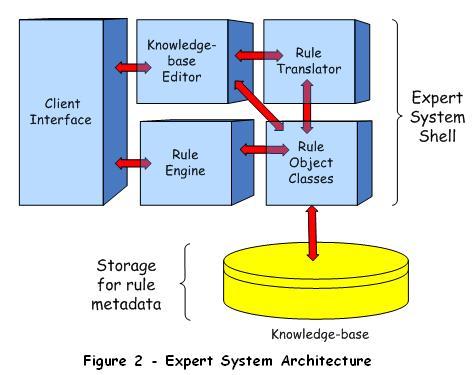An expert system is, typically, composed of two major components, the Knowledge-base and the Expert System Shell. The Knowledge-base is a collection of rules encoded as metadata in a file system, or more often in a relational database. The Expert System Shell is a problem-independent component housing facilities for creating, editing, and executing rules. A software architecture for an expert system is illustrated in below figure 2:

The shell portion includes software modules whose purpose it is to,
Process requests for service from system users and application layer modules;
Support the creation and modification of business rules by subject matter experts;
Translate business rules, created by a subject matter experts, into machine-readable forms;
Execute business rules; and
Provide low-level support to expert system components (e.g., retrieve metadata from and save metadata to knowledge base, build Abstract Syntax Trees during rule translation of business rules, etc.).
